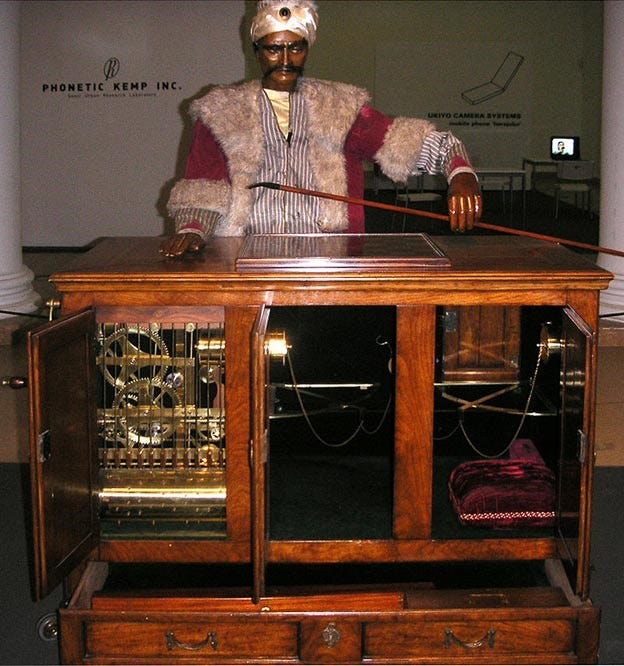
When the dark magician, clad in mystical robes and a jeweled turban, was wheeled out before Empress Maria Theresa’s court in 1770, a hush fell over the audience. Inventor Wolfgang von Kempelen claimed that no human could defeat this magician at chess. The magician, however, was no human; it was a lifeless construction with a human-like appearance, complete with a black beard and Turkish robes, lending it the air of an "oriental sorcerer."
Despite its eerie, motionless demeanor, the magician—known as the Turk—astonished the crowd when Kempelen wound the device, causing it to raise its hand and lift its gaze. The Turk went on to defeat numerous challengers, including Benjamin Franklin and Napoleon Bonaparte. Although it was later beleaved to be an 18th-century hoax, operated by hidden chess experts, the Turk captivated the public and marked a significant moment in the history of automata.

Ancient Automatons, Myth and Machines
The Mechanical Turk was not the origin of robots or automata. Long before, mechanical creations had fascinated humanity. E.R. Truitt, in "Preternatural Machines," describes automata like musical fountains, robotic servants, and mechanical animals, often originating from cosmopolitan courts such as Baghdad, Damascus, and Constantinople. These devices entered medieval Europe as gifts or through traveler's accounts.
Keep reading with a 7-day free trial
Subscribe to Ancient Origins UNLEASHED to keep reading this post and get 7 days of free access to the full post archives.



